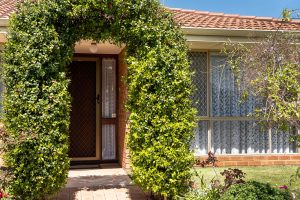Area Overview: Palmyra
The word Palmyra means “city of palms” and was named after a city in the Syrian Desert. This area, like much of Melville, was covered with Zamias that looked like mini palm trees and were toxic to cattle and had to be removed. Apparently a competition was run to find a name for the district.
The size of Palmyra is approximately 4 square kilometres. The area is renowned for its public open space with over a dozen parks and community facilities along with two reputable primary schools, Our Lady of Fatima and Palmyra Primary School.
The suburbs offers a diverse mix of properties ranging from 2 bedroom villa/units, modern townhouses/lifestyle homes through to character gems on full blocks.
Palmyra is a vibrant and exciting community that has flourished over the last decade attracting many families and professionals who call it home!
History
Palmyra started to be developed around 1903 as workers sought out an area close to Fremantle in which to live. Further subdivision occurred in 1907. Development in the early days was sparse, with houses surrounded by bush. Residents had to erect fences to keep out stray animals that roamed in the area. The rate of growth went up a notch around 1912, and in 1915 Palmyra was included in the Metropolitan Water Supply Scheme and had the benefit of the extension of the tramway to Stock Road. By 1920 much of the developed part of Palmyra was made up of working-class families from English, Irish and Scottish backgrounds.
Many of the street names in Palmyra have a Roman or Middle Eastern connection. For example, Zenobia Street is named after a Queen of the Palmyra in Syria. Aurelian Street was named after the Roman Emperor who overthrew Queen Zenobia and reigned in her stead. Petra Street is an ancient city in Jordan linked by trade to Palmyra.
Palmyra has a spiritual connection to the dreaming creation story of the bobtail (yoorn) goanna and fresh water springs.
Palmyra is home to the Melville History Society which is located at the Miller Bakehouse Museum in Baal Street. Originally opened as the Sunlight Bakery in 1935 by H. Miller & Sons, the building is now classified by the National Trust and the City of Melville’s Municipal Inventory. Other community groups include the Melville Theatre Company, the Stock Road Senior Citizens Club and Melville Cares at June Barton House.
Some older Palmyra buildings included the fire station (now demolished) at the corner of Murray Road and Canning Highway, which opened in 1956 and later became the Palmyra Recreation Centre. The old Palmyra Police Station in Harris Road was built in 1927 and operated until 1963.
Stammers, not far from the One Residential office, was a popular family operated general store first established on the Perth Fremantle Road (now Canning Highway) in 1917. It later developed into a shopping centre and closed in 2000 after 83 years. It has since been taken over by a national retailer.
Palmyra saw the opening of Melville’s first private school in 1925. It was called St Gerards and operated from a Roman Catholic Hall in Foss Street. The Hall has now been replaced by Our Lady of Fatima Church and Primary School. Films were also shown on Friday nights at St Gerard’s Hall until a picture theatre, the Empire Hall, opened in 1930 at the corner of Petra Street and Canning Highway. This was followed in 1937 by the Swan Suburban Picture Gardens, then the Mayfair Theatre in 1938 off the Highway on Westbury Crescent. The Empire Hall renamed Queen’s Hall became a popular weekly dance hall.
In 1914 home buyers could purchase a half acre block in the ‘final Fremantle Subdivision of Palmyra’ for upwards of £15. All that was required was a deposit of £3 with the balance to be paid in one year (interest free) or three years by arrangement. Property values have appreciated considerably since these days as One Residential’s sales results attest!











